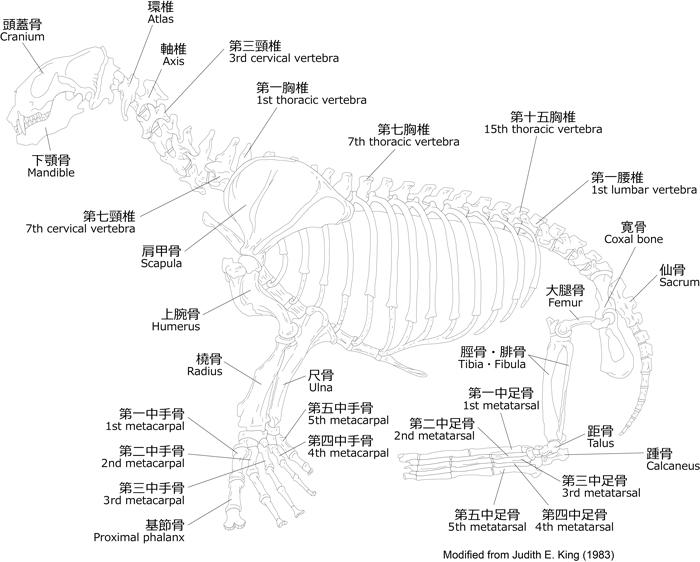
3D Bone Atlas Database Sea lion
Sea lion(アシカ)
Sea lion(アシカ)
Overview
Japanese Sea lions (Otariidae family) that were breeding along the coast of Japan are extinct. During the Jomon period, a group of sea lions that landed during the breeding season was targeted and captured that represented by archaeological remains from the Hamanaka-2 site on Rebun Island, Hokkaido, on the coast of the Sea of Okhotsk.
In the Japan sea, remains are excavated from the Mawaki Site in Ishikawa Prefecture during the Jomon period and the Tsuji Site in Nagasaki Prefecture during the Yayoi period, indicating that they were widely distributed in the Japanese archipelago from Hokkaido to Kyushu.
Sea lions may have had a deep connection with spiritual cultures, such as collecting meat and fat, acquiring materials for practical products such as fishing hooks and fur using canines, and piercing the skulls of adult males for ceremonies. In some areas, it also functioned as a prestige.
*The model skeletal specimen is a California sea lion.
References: Akira Matsui eds. 2008 Fundamentals of Zooarchaeology. Kyoto University Press. Kyoto (in Japanese with English). Sachiko Uchiyama. 2010 Marine animals (2) Sea lions and seals. Jomon Period Archaeology Vol.4, Dosei-sha, Tokyo, pp 188-197 (in Japanese). Niimi Michiko. 2018 Marine animal hunting in Hokkaido. Archaeology Quarterly (144), pp 30-33 (in Japanese).
How to browse
3D data cannot be viewed on the browser.
For Microsoft Edge / Google Chrome: Right-click the part and save the PDF with "Save Link (Destination) As"
For Internet Explorer: Right-click the part and select "Save Target As" to save the PDF.
Depending on your computer, it may take some time to reflect the latest information. You can solve it by the following methods:
For Microsoft Edge: Upper right [...]-[Settings]-[Privacy, Search, Services]-Clear [Browsing Data]-Click the [Select Data to Clear] button- [Cached Images and Files] Check the box-Click the [Clear Now] button
For Google Chrome: Upper right-Chrome settings- [Other tools]-[Clear browsing history] -Select any [Period]-Check [Cached images and files] [Clear browsing history data] Click the button


